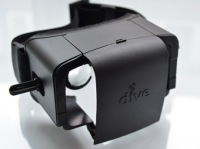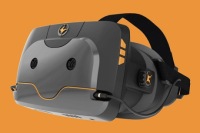Extending the Reach of High Quality P-12 Education through ICT: An International Trend
by Mark Sivy
Realizing that a well-educated populace is essential for boosting national prosperity and competitiveness in an international economy, top-level education departments and ministries around the world are now focused on ensuring that their P-12 curricula and instruction are adjusted to modern standards. This task involves ensuring that learners have the specific skills, literacies, knowledge, and expertise that will ensure their success in the global marketplace. A crucial piece in accomplishing this, both in terms of learning outcomes and instructional delivery, is ICT (Information, Communications and Technology).
 As a driver of learning outcomes, ICT has played an important role in the development of new international curricular strategies. The Partnership for 21st Century Skills has been at the forefront of providing a basis for the remodeling and modernization of teaching, learning and curriculum, with ICT being a significant consideration. Even though established as a US K-12 education initiative, the organization’s recommendations have global relevance and implications. One of the major categories found within the Partnership’s renowned publication, P21 Framework Definitions document, was created in response to the fact that we live in a global environment that is infused with and dependent upon technology and media. This portion of the document offers the following guidelines for the knowledge, skills, and expertise that student should possess as a result of the learning process:
As a driver of learning outcomes, ICT has played an important role in the development of new international curricular strategies. The Partnership for 21st Century Skills has been at the forefront of providing a basis for the remodeling and modernization of teaching, learning and curriculum, with ICT being a significant consideration. Even though established as a US K-12 education initiative, the organization’s recommendations have global relevance and implications. One of the major categories found within the Partnership’s renowned publication, P21 Framework Definitions document, was created in response to the fact that we live in a global environment that is infused with and dependent upon technology and media. This portion of the document offers the following guidelines for the knowledge, skills, and expertise that student should possess as a result of the learning process:
Information Literacy
- Access and Evaluate Information
- Access information efficiently (time) and effectively (sources)
- Evaluate information critically and competently
- Use and Manage Information
- Use information accurately and creatively for the issue or problem at hand
- Manage the flow of information from a wide variety of sources
- Apply a fundamental understanding of the ethical/legal issues surrounding the access and use of information
Media Literacy
- Analyze Media
- Understand both how and why media messages are constructed, and for what purposes
- Examine how individuals interpret messages differently, how values and points of view are included or excluded, and how media can influence beliefs and behaviors
- Apply a fundamental understanding of the ethical/legal issues surrounding the access and use of media
- Create Media Products
- Understand and utilize the most appropriate media creation tools, characteristics and conventions
- Understand and effectively utilize the most appropriate expressions and interpretations in diverse, multicultural environments
ICT Literacy
- Apply Technology Effectively
- Use technology as a tool to research, organize, evaluate and communicate information
- Use digital technologies (computers, PDAs, media players, GPS, etc.), communication/networking tools and social networks appropriately to access, manage, integrate, evaluate and create information to successfully function in a knowledge economy
- Apply a fundamental understanding of the ethical/legal issues surrounding the access and use of information technologies
 As a medium for instructional delivery, ICT plays another significant role in the modernization of international education systems. One of the challenges in many countries has been the provision of a quality and equal education to all children regardless of their circumstances. Around the world, ICT infrastructures are being updated and expanded to provide Internet access to both urban and rural destinations and recipients. Additionally, these schools and learners are being provided with devices to receive educational web content that has been specifically designed and developed by subject matter experts, master teachers, and instructional designers who are highly specialized in e-learning and the variety of learning devices. Of particular interest and development are mobile learning, One Laptop per Child (OLPC), and other one-to-one initiatives. These will be examined in future posts.
As a medium for instructional delivery, ICT plays another significant role in the modernization of international education systems. One of the challenges in many countries has been the provision of a quality and equal education to all children regardless of their circumstances. Around the world, ICT infrastructures are being updated and expanded to provide Internet access to both urban and rural destinations and recipients. Additionally, these schools and learners are being provided with devices to receive educational web content that has been specifically designed and developed by subject matter experts, master teachers, and instructional designers who are highly specialized in e-learning and the variety of learning devices. Of particular interest and development are mobile learning, One Laptop per Child (OLPC), and other one-to-one initiatives. These will be examined in future posts.
Reflection Point – M-learning is the intersection of mobile computing and e-learning, that includes anytime, anywhere resources; strong search capabilities; rich interaction; powerful support for effective learning; and performance-based assessment. ~Clark Quinn




